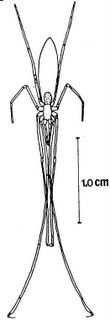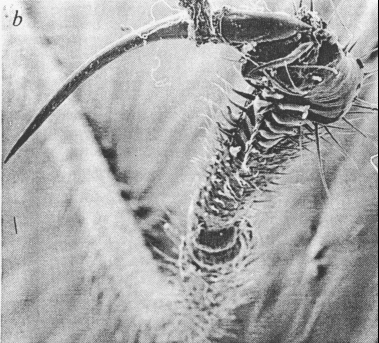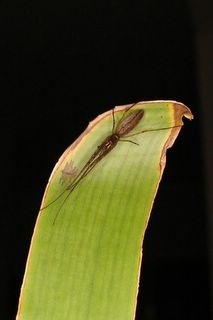
When we hiked to Queen's bath (look at Jan. 23 2005 posting on the blog) I thought this lowland waterfall looked like good Tetragnathid habitat. The problem was it is VERY low elevation (10-50 m) habitat and most of the lowland area on the Hawaiian islands have been overtaken by exotic plants and animals. I was advised by researchers at the Bishop Museum to stick with the high elevations if I was to to have any chance of finding native species of Hawaiin long-jaw spiders (Tetragnathidae).


 (closeup of the tarsal claw)
(closeup of the tarsal claw)




